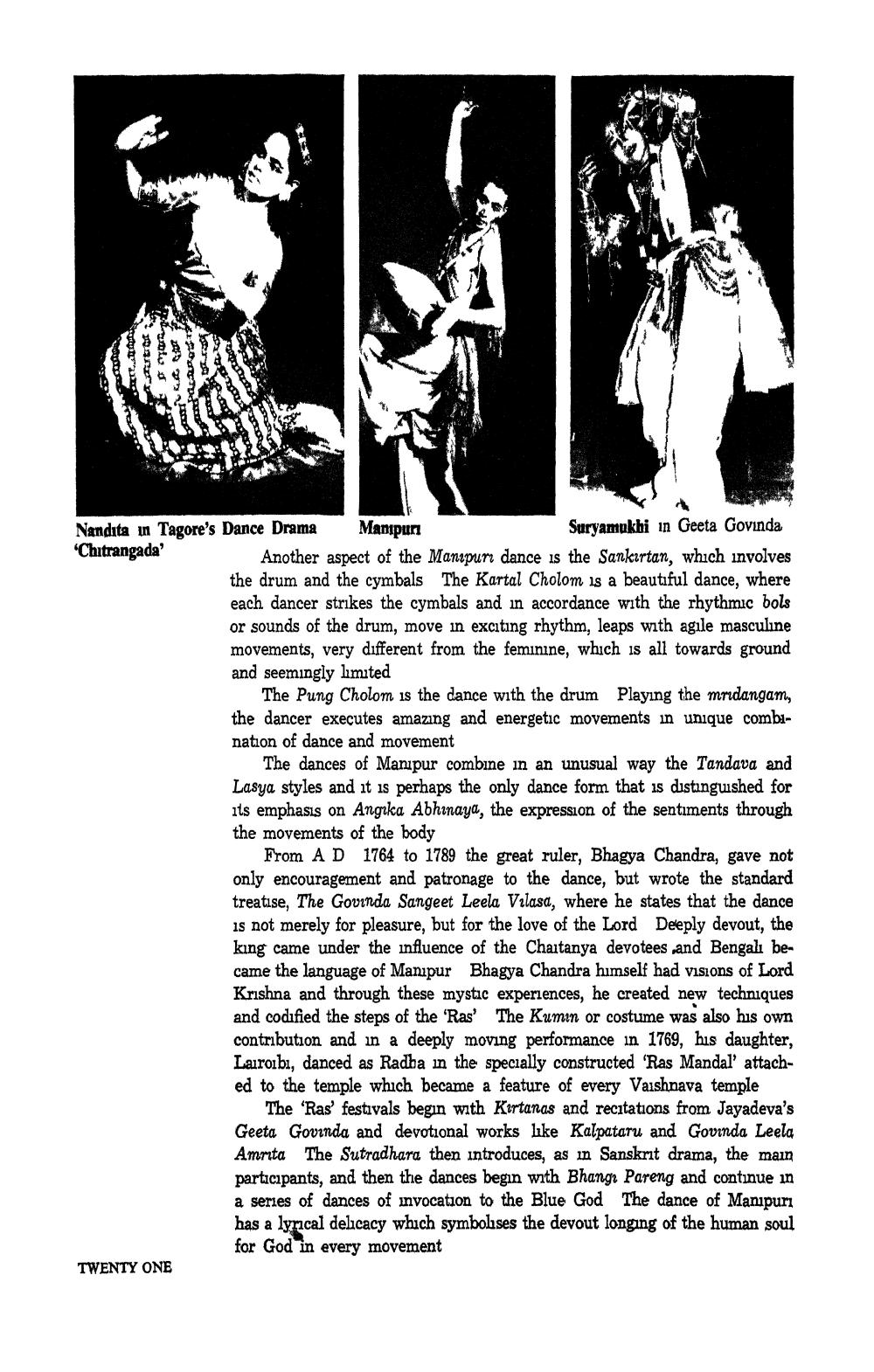________________
Nandita in Tagore's Dance Drama 'Chitrangada'
Manipuri
Suryamukhi in Geeta Govinda Another aspect of the Manipur dance is the Sankirtan, which involves the drum and the cymbals The Kartal Cholom is a beautiful dance, where each dancer strikes the cymbals and in accordance with the rhythmic bols or sounds of the drum, move in exciting rhythm, leaps with agile masculine movements, very different from the feminine, which is all towards ground and seemingly limited
The Pung Cholom is the dance with the drum Playing the mridangam, the dancer executes amazing and energetic movements in unique combination of dance and movement
TWENTY ONE
The dances of Manipur combine in an unusual way the Tandava and Lasya styles and it is perhaps the only dance form that is distinguished for its emphasis on Angika Abhinaya, the expression of the sentiments through the movements of the body
From A D 1764 to 1789 the great ruler, Bhagya Chandra, gave not only encouragement and patronage to the dance, but wrote the standard treatise, The Govinda Sangeet Leela Vilasa, where he states that the dance is not merely for pleasure, but for the love of the Lord Deeply devout, the king came under the influence of the Chaitanya devotees and Bengali became the language of Manipur Bhagya Chandra himself had visions of Lord Krishna and through these mystic experiences, he created new techniques and codified the steps of the 'Ras' The Kumin or costume was also his own contribution and in a deeply moving performance in 1769, his daughter, Lairobi, danced as Radha in the specially constructed 'Ras Mandal' attached to the temple which became a feature of every Vaishnava temple
The 'Ras' festivals begin with Kartanas and recitations from Jayadeva's Geeta Govinda and devotional works like Kalpataru and Govinda Leela Amrita The Sutradhara then introduces, as in Sanskrit drama, the main participants, and then the dances begin with Bhang Pareng and continue in a series of dances of invocation to the Blue God The dance of Manipuri has a lyrical delicacy which symbolises the devout longing of the human soul for God in every movement




